Astris PME Guide for Choosing Wheelchairs
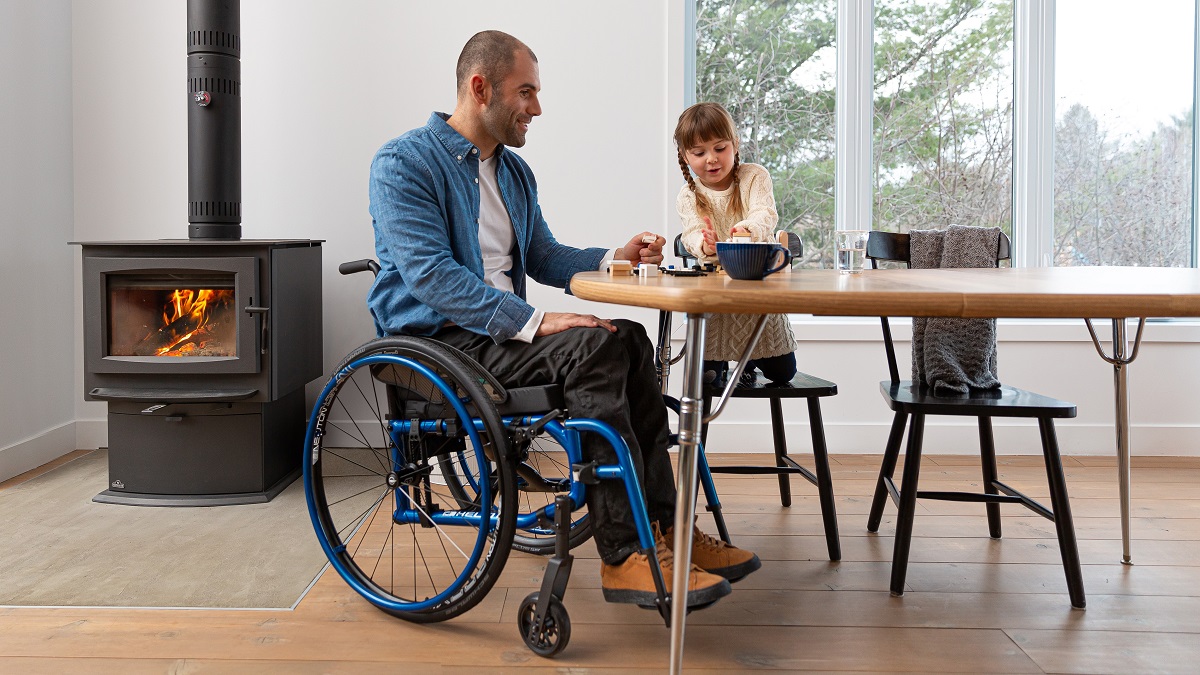
The wheelchair can be viewed as an extension of the user, particularly where the user is reliant on the chair for everyday use. It is therefore an enabler for participation in daily routines, an enhancer to manage social interactions with peers and the larger community and a facilitator to expand the world of a user to explore lifestyle opportunities and experiences.
written by
Venesha Moodley,
Clinical Educator
(B. OT, Postgrad Cert in Clinical Rehab)
This is Part 1 of a 3 Part blog series on wheelchairs. This blog focusses on Standard Wheelchairs. Part 2 and Part 3 will highlight considerations relating to Performance Wheelchairs and Positioning Wheelchairs respectively.
The wheelchair you choose can make the difference between being a passive receiver and an active contributor. Advances in technology, available materials, design options and types of wheelchairs on the market leaves end users spoilt for choice regarding:
- Aesthetic choices.
- Set-up options for safety, efficiency and postural support.
- Preferences to optimise function.
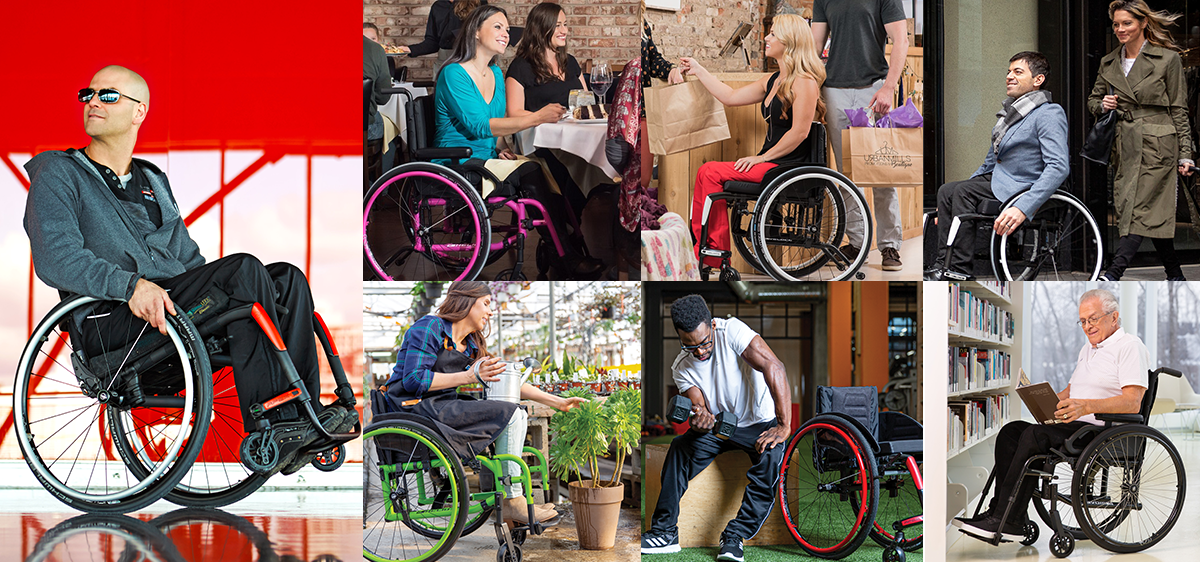
What factors require consideration when choosing a suitable wheelchair?
- Goals and preferences regarding mobility (what I want to do with my wheelchair – typical and atypical use).
- Physical environments in which the wheelchair will be used?
- My capabilities and challenges / difficulties.
- What have I previously tried and how this impacted on my daily life?
In summary, consideration of the user’s physical capacity, postural needs, level of activity participation and context of use (mostly for access of level indoor environments or outdoor terrain or a combination) is required prior to finalising your wheelchair preference.

Wheelchairs generally fall into 3 main categories, including: Standard, Performance and Positioning wheelchairs. The available wheelchairs in each category will offer differences in Stability, Manoeuverability and Pushing Efficiency.
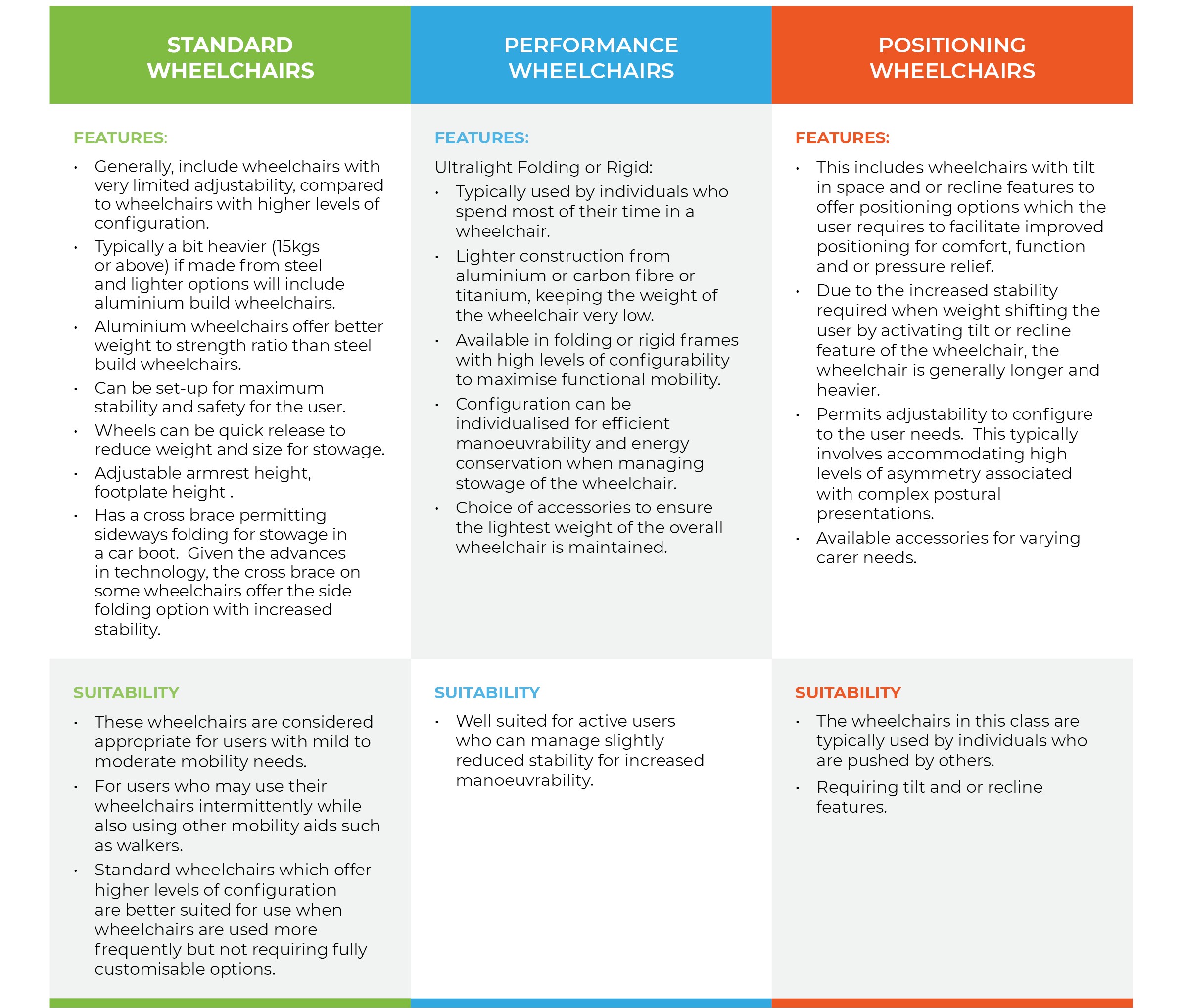
STANDARD WHEELCHAIRS
Standard wheelchairs are commonly considered a first option for first time wheelchair users who are developing their confidence in wheelchair skills and possibly in their trunk control depending on their diagnosis. These wheelchairs can vary in the available level of configuration to optimally manage the desired level of stability and manoeuvrability required for participation in their daily activities. Whilst very basic wheelchairs may appeal based on cost and we may not fully consider the extent of the use of the wheelchair for both essential daily use and recreational and or social use. Further consideration relating to the following may be beneficial:
- What do I want to be able to do while using my wheelchair and where do I want to go with my wheelchair? For example, access the home, outdoor even and uneven surfaces, social activities and holiday destinations.
- How will the wheelchair need to be configured and/or set-up to match my abilities and challenges?
- What wheelchairs have I previously tried and what has worked and not worked well?
Some wheelchairs which fall into this category of wheelchairs include: Breezy Basix, Quickie 2, Quickie, Helio A7. The material build of the wheelchairs may include steel or aluminium with aluminium offering improved strength to weight ratio. Steel is heavier (2.5 times denser than aluminium) and adds weight to the weight of the wheelchair impacting propulsion and general handling efficiency of the wheelchair.
Consider the specifications of the wheelchair with care as indicated below:
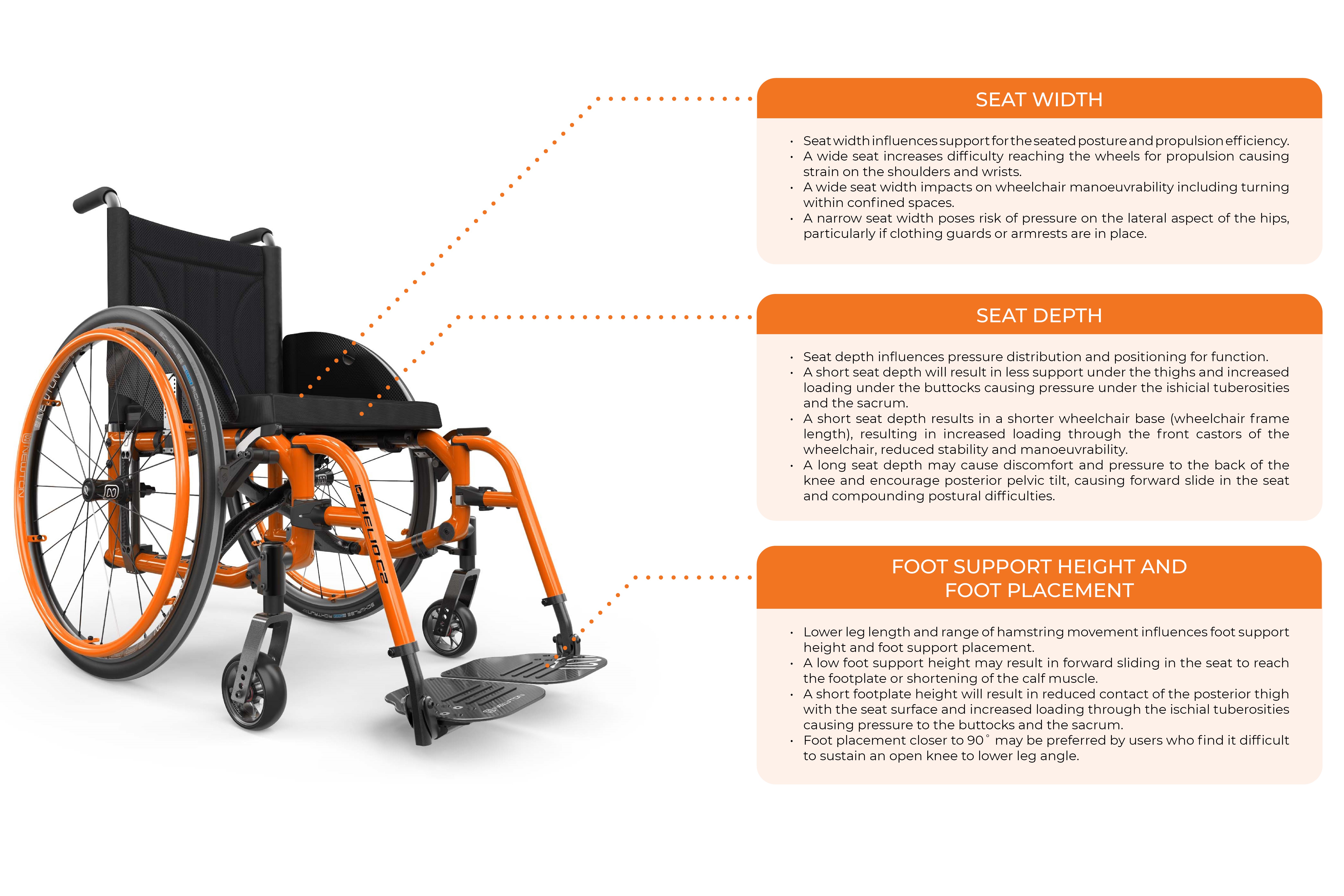
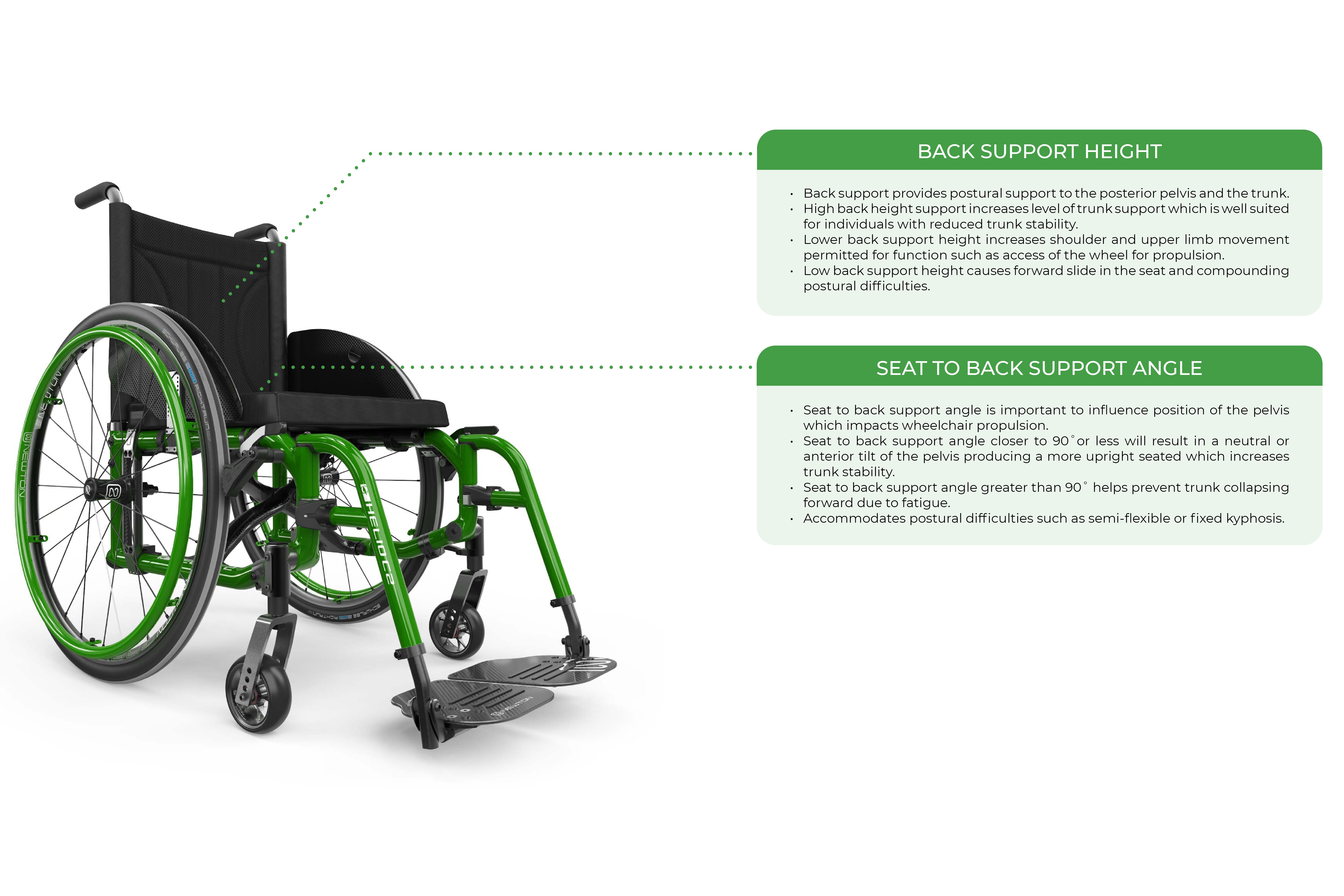
In the event that the user may consider use of a power assist in the future, a more robust wheelchair option should be considered. The use of a power assist option makes greater demands on a wheelchair including:
- Greater vibration on the wheelchair frame.
- Stress and strain on the wheelchair frame, particularly when taking corners and accessing uneven ground.
- Added weight to the manual wheelchair frame.
Therefore, ensure that;
- a suitable manual wheelchair frame offers durability and vibration dampening to reduce overall maintenance, irrespective of the terrain accessed is considered;
- the selected wheelchair frame is lightweight, albeit durable for ease of stowage to and from the vehicle;
- the wheelchair can be configured to meet the user’s preferred positioning and implement changes to attach a power assist option to;
- consideration is given to a performance wheelchair over a standard wheelchair if the user is a full-time user.
Part 2 in this series will highlight considerations relating to Performance Wheelchairs.
Astris PME Product Consultants will be able to advise suitable options, accessories and arrange a trial. Call 1300 131 884 to arrange an appointment.

